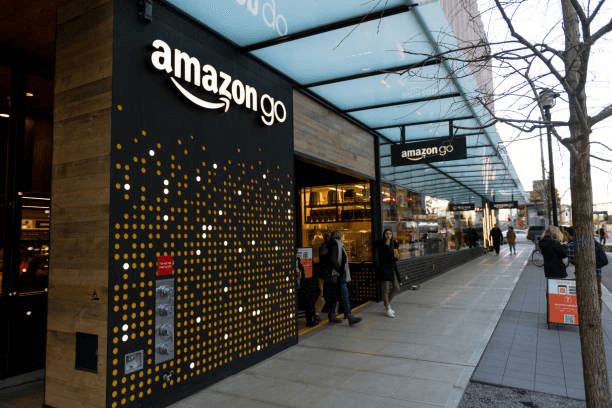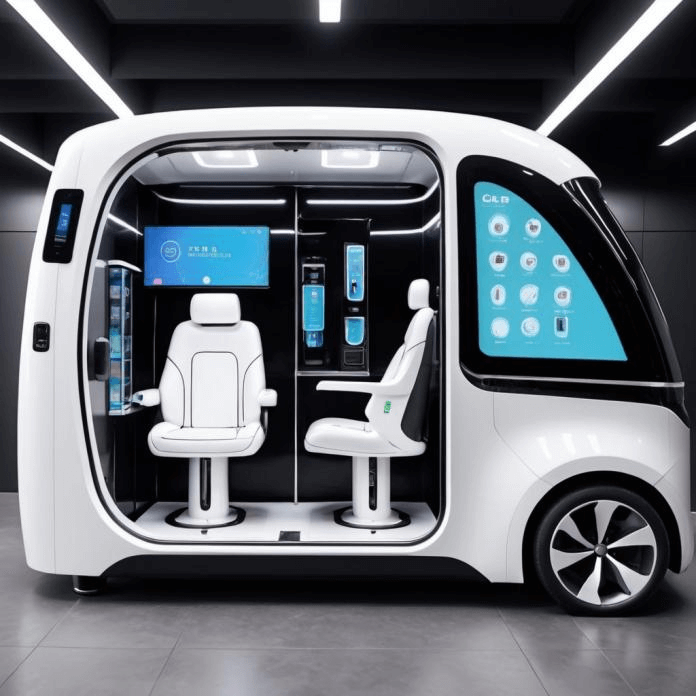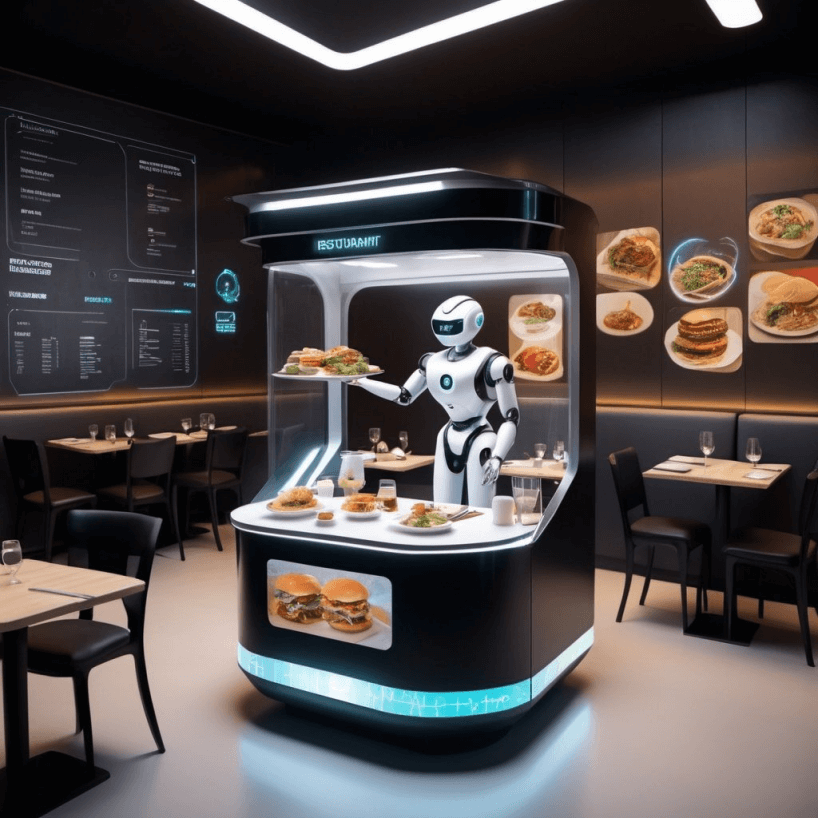June 28,2050 Sunny
Many years ago, when I traveled to New York City, I had a feeling that the concept of the unmanned economy would sweep across various service industries.
At that time, I found Amazon Go to be quite novel. The seamless experience of entering the store, grabbing what you need, and leaving without having to interact with store staff was great for me. I quietly looked forward to a future where this kind of unmanned supermarket concept would be applied to restaurants or malls. Little did I know that 30 years later, this service model would extend to various industries. While I initially found it quite exciting, now I’m not so fond of the unmanned economy anymore…

Figure 1: Amazon Go (Tmax, n.d.)
Today, I made plans with a friend to catch up over dinner, but oh my, the restaurant she booked is so far away from me! It feels like it would take 30 minutes just to get there by taxi. I feel a bit conflicted—not because I don’t want to go, but because getting a taxi now is not the same as it used to be. It used to be that there was a driver who would drive you there, but now almost all taxis are unmanned. I’m really worried that an autonomous car might have an accident. If the car’s system malfunctions, I could… well, I could die. When I complained about this to my daughter, she kept reassuring me, “Mom, don’t worry. Autonomous driving technology has already advanced a lot, and the probability of accidents is very low. Let me read you some news. According to statistics, the probability of accidents involving autonomous vehicles in recent years is less than 0.0001%. So, Mom, just relax.” My daughter always thinks I’m old-fashioned. She really doesn’t understand. She didn’t experience the first few years when autonomous driving cars were introduced, and the accidents caused by immature technology stagnated the development of autonomous vehicles for several years. It wasn’t until later that major car manufacturers gradually developed the technology after switching from sensors to visual neural systems (Tales, 2024). But I still feel uneasy. I still believe that having a driver is better than not having one, especially in an industry involving life safety.
At my daughter’s strong insistence, I reluctantly got into the driverless car. The temperature inside the car was okay, and the driverless car can adjust the temperature inside the car based on people’s body temperature. This is quite humanized. I looked at the beverage vending machine in the car and selected a cup of hot milk tea. After tearing open the paper packaging of the straw, I couldn’t help but sigh. It’s already 2050, why hasn’t this paper straw been upgraded? So many products have been upgraded, but this product, which softens in water after half an hour, still exists. It’s really frustrating.

Figure 2: Autonomous car (Driverless Car With Temperature Adjustment and Has B. . . | OpenArt, n.d.)
When we arrived at the restaurant, my friend and I ordered together. The holographic projection technology can display the styles of the dishes in the restaurant in a 360-degree manner, with the names and ingredient descriptions beside them, making ordering very convenient. If you feel bored while waiting for your food, you can even check the real-time cooking process in the kitchen. Well, I used to enjoy watching it when it was done by real people, so I found it interesting. But now it’s all done by robots, and I always feel like something is missing, so I haven’t clicked on that option anymore. Soon, robots came to deliver the food one after another. I looked at these dishes. They tasted okay, but I felt something was missing. It seems that restaurants everywhere are like KFC or McDonald’s, with serious homogenization of dishes. The same condiments, the same procedures. It’s hard to find dishes made by chefs themselves. Now only a few restaurants have chefs cooking, but there are many reservations, and the prices are high. I miss the old days when every restaurant had signature dishes with distinctive flavors. The city’s hustle and bustle seem to have disappeared, replaced by cold machines and standardized services. The fast-paced life makes people no longer pursue eating with high standards. Just being able to eat enough and not too bad has become the mainstream concept of catering nowadays.

Figure 3: Future Restaurant (Future Restaurant Has Holographic Menu, and Also the. . . | OpenArt, n.d.)
I often miss for the time when the unmanned economy had not yet spread to various industries. People had high levels of happiness and satisfaction with life back then. Life was simpler, without so many worries about technology. Although the unmanned economy has brought great convenience to daily life, it has also made me reflect on whether humans are overly obsessed with technological efficiency at the expense of humanistic care. Standardized services and homogeneous products may be more efficient, but they also gradually erode the differences between people. In the past, every restaurant had its own unique flavors, and every staff member would treat each customer with care. Nowadays, those inherent human touches seem to have been replaced by the coldness of machines. Perhaps we should retain some humanized spaces in the wave of the unmanned economy, preserving the original human care and warmth.
Reference
[1] Tmax. (n.d.). The original Amazon Go Store in in downtown late in the day. iStock. https://www.istockphoto.com/nl/foto/amazon-gm1139327045-304491331
[2] Driverless car with Temperature adjustment and has B. . . | OpenArt. (n.d.-b). OpenArt. https://openart.ai/community/Y75QqfIKFcIXBJpHjthb
[3] Future restaurant has holographic menu, and also the. . . | OpenArt. (n.d.). OpenArt. https://openart.ai/community/t92aEZQAZbMDb9pMxmul
[4] Tales, T. &. (2024, May 1). How Tesla’s Self-Driving Cars Navigate the Road with Machine Learning. Medium. https://techntales.medium.com/how-teslas-self-driving-cars-navigate-the-road-with-machine-learning-b6f67052b8ba

